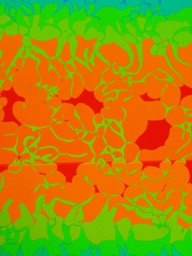Photonic crystals
If a medium is periodic with the periodicity on the order of the wavelengths of visible light it can acquire extremely interesting optical properties. Light with the same wavelength as the structural periodicity may be blocked from transmission, being strongly reflected instead, whereas wavelengths a bit longer or shorter will generally be admitted. This property is described as an optical band gap of the material, which is often referred to as a photonic crystal. Chiral liquid crystals of nematic or smectic-C type (the former are often called cholesterics) generally exhibit a helical superstructure, in which the director is modulated helicoidally with a period that can often be in the 300-400nm range, i.e. the same period as the wavelengths of visible light within the liquid crystal. The result is that they constitute a very peculiar type of self-assembled photonic crystal, reflecting light within a narrow wavelength range around the helix pitch, if it has a circular polarization of the same handedness as that of the director helix. The opposite handedness is transmitted. In case of unpolarized or linearly polarized light, it is divided in two circular polarized components, one fully reflected and one fully transmitted. Since the liquid crystal pitch is generally highly temperature sensitive the band gap of this photonic crystal can be tuned by changing the temperature.
In our research we explore the photonic crystal properties of cholesteric liquid crystals in various contexts, in electrospun fibers containing a cholesteric liquid crystal in the core, in colloidal arrangements of shells of cholesteric liquid crystal, and in photonic crystal paper films produced by drying cholesteric suspensions of cellulose nanocrystals.
 Back to research overview.
Back to research overview.







